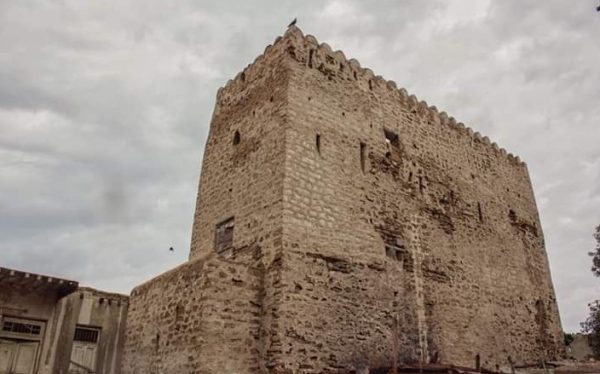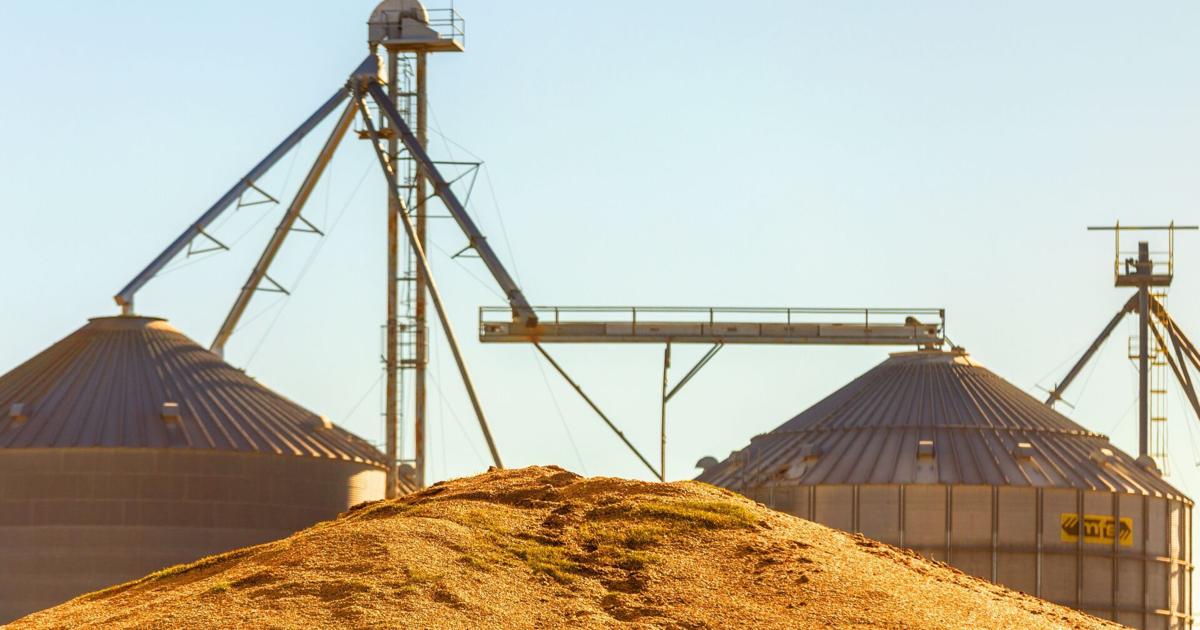By Mariyam Suleman Anees
Copyright thediplomat

When Gwadar, Pakistan’s southwestern port city, first came into the limelight in the early 2000s, it was presented as a remote village of fishermen that had always been disconnected from the world outside. But, for centuries, Gwadar was, in fact, an active natural sea port, with a historic role in the transregional maritime network of the Indian Ocean. Today much of this history remains overshadowed by Gwadar’s more contemporary geopolitical importance, especially with the construction of a deep-sea port in 2007 and the inauguration of the $62 billion China-Pakistan Economic Corridor (CPEC) project in 2013. Gwadar has, however, long sat on a very important strategic location, and hence, was an active cosmopolitan center, like no other town in Balochistan. The earliest known mention of Gwadar dates back to 325 B.C., in Indica, one of the most detailed ancient accounts of Alexander the Great’s conquests. On Alexander’s return journey after his conquests in India, he traveled along the Gedrosia coast (present-day Makran in southwest Balochistan). The villages of Kalmat. Pishukan and Gwadar are mentioned in this account. A number of records also confirm that historically Gwadar had likely functioned as an intermediate port where sailors would stop to rest and stock up on supplies. For example, Guador (Gwadar) finds mention in the memoir of a Turkish admiral named Sidi Ali Reis from 1554. Reis sought refuge in Gwadar after his fleet was attacked by the Portuguese in the Indian Ocean. He also mentions his interactions with the Baloch people and the chief of Makran, Malik Jalal. During the 16th century, the Portuguese established control over major maritime routes in the Indian Ocean, particularly the Arabian Sea, monopolizing trade and coastal navigation. This monopoly is also recorded in the oral history of the Makran coast. In one such account from 1581, Mir Hammal, son of Jihind, the Baloch chieftain of the coastal village of Kalmat, was ambushed by a Portuguese fleet. Abandoned by his men, Hammal was severely wounded. In some versions, he was captured by the Portuguese and imprisoned in southern India. According to oral history, the Portuguese then looted and burned down the towns of Gwadar and Pasni. Among the structures that survived their destruction is a fort in Jiwani, a small coastal town at the Iranian border, and a stone masonry dam on Koh-e-Bateel, the headland in the south of Gwadar. Just parts of the dam survive today. Perhaps the most significant part of Gwadar’s history begins in 1784, when Sultan bin Ahmad of Muscat fled a power struggle and sought refuge in Gwadar. Mir Naseer, the Khan of Kalat in Balochistan, granted him control of Gwadar. After ascending to the Omani throne, Sultan bin Ahmed declared Gwadar a part of Oman. This marked the beginning of almost two centuries of Omani control over Gwadar. The period is known to have given Gwadar most of its historic architecture and dynamic heritage. The old market of Shahi Bazaar grew into a commercial hub with streets, alleyways, and an open space like a city plaza where trade of the time took place. An old, abandoned house in Shahi Bazaar, Gwadar, Pakistan. Photo by Asa Wahag. In the plaza or galag, as locals call it, traders would gather, many with caravans of camels carrying dates and other goods from other parts of Balochistan, and taking back dried fish with them. People from different parts of Balochistan would also wait here for ferries that travelled twice a month from Gwadar to Karachi and all the way to Bombay. Meanwhile, Arab troops would be raiding the nearby forts. Also present were Englishmen, whose interactions with locals were viewed with suspicion, given their ties with the colonial authorities. Gwadar’s economy at the time primarily relied on fishing, but trading ships sailed from and to Gwadar from Persia, Karachi, and Indian coastal towns. Several important architectural structures were also built during this time, including a cylindrical watchtower with narrow slits for surveillance and a rectangular fort with a rooftop vantage point and a small inner courtyard within Shahi Bazaar. Today, from the rooftop of this fort, one can see the narrow alleys of Shahi Bazaar, its abandoned shops and beautifully crafted balconies, but also the newly constructed East Expressway and the cranes of Gwadar Port. Like the one at Shahi Bazaar, there was a rectangular fort at Taana Ward, the northern part of Gwadar, as well. For a long time, it functioned as a police station, but in 2007, it was converted into a museum by the Department of Archeology and Museums of the Pakistani and Omani governments. However, the museum offers little in terms of exhibits, with only a few artifacts on display and limited written information available to visitors. The cylindrical watchtower and the rectangular forts at Shahi Bazaar and Taana Ward have sturdy walls made from stone and mud, and display a design typical for Omani coastal defenses of the medieval era. Shahi Bazaar had a mix of residential, commercial and administrative properties with narrow, interconnected streets. Shops lined both sides of a street, while residences with wooden balconies opened onto the market. The colors of these buildings have now faded and many of their balconies have fallen to the ground. The bustling market and neighborhood of just half a century ago feels dead now. During the Omani era, Shahi Bazaar was a thriving marketplace. In 1838-1839, an American ship docked at this little port to trade bales of wool. This remote fishing town was a cultural melting pot; there were Baloch locals, alongside Koja-Ismaili Muslims who mostly spoke Gujarati, a Sindhi Hindu community, Omani Arab administrators, and the British imperial agents. Recognizing Gwadar’s value, the British government secured concessions from the Omani Sultanate for its use, and in the year 1891, Oman became a British protectorate. Under an agreement, the British colonial rulers were permitted to expand their influence in the Indian Ocean and control the trade routes. But even before the British came to Oman, they had already set foot on the Balochistan coast. In 1863, an assistant political agent was appointed in Gwadar, and a rest house, now locally known as the Charpadagu, was constructed for the British officers. The British also established a telegraph office in Gwadar, which operated from 1863 to 1931, as part of the Indo-European Telegraph Line. Today, the telegraph office still stands, with ongoing conservation work being carried out by the Gwadar Development Authority. A post office was also established in 1894, and the British India Navigation Company operated a steamship service from 1856 to 1956. While such infrastructure was revolutionary for the time, it was built to enable Britain to tighten its presence and control in the Indian Ocean. However, post-World War II, as the British left the region, so did the Omanis. Gwadar became a part of Pakistan in 1958. As the Indian Ocean trade declined, Shahi Bazaar lost its activity. The natural port was no longer in use; no ships stopped by. The steam ferries also ceased, and the telegraph office closed down. By the 1960s-1970s, Gwadar had become a quiet fishing village once more. Today, only a few traces of the bazaar remain in Gwadar. The once colorful buildings are now faded, with many structures at risk of collapse. For a long time, this part of Gwadar town was neglected. Gwadar’s master plan of 2005 made no mention of the historic and heritage sites. It took more than a decade and years of advocacy for conservation of these by local activists that, in 2019, the new city plans included conservation. But even this is only focused on selected landmark structures and the revival of their architecture. Omani Watch Tower in Shahi Bazaar, Gwadar, Pakistan. Photo by Asa Wahag. A comprehensive plan to revive the entire Shahi Bazaar is needed, as are plans for adaptive reuse of historic buildings. Muscat can serve as an example. The Mutrah Souq has been turned into an economic hub reflecting Oman’s cultural diversity, history, and heritage, with continuous use over several centuries. Gwadar also needs to revive the Shahi Bazaar through reusing its old buildings. Authorities must enact legislation like the Balochistan Cultural Heritage Preservation Act of 2010 and the Balochistan Antiquities Act of 2014 to designate Gwadar’s Shahi Bazaar and other landmarks as protected heritage sites. Instead, the Gwadar Town Planning Regulations (GTPR) 2020 permitted the construction of high-rise buildings around the waterfront area of the old town, along the East Expressway. These buildings pose a threat to the conservation of Shahi Bazaar. The Gwadar Development Authority has also recently announced a Central Business District (CBD), a project under the Gwadar master plan that includes the New Gwadar International Airport, Eastbay Express Way, Pak-China Technical and Vocational Institute, remodeling of roads, establishment of parks, health and educational centers, designing ecological corridors, mapping tourism spots, and rehabilitation of the old town. But a mere focus on rehabilitation or isolated conservation of different structures is not enough. Without making real use of these historic buildings, and importantly, integrating them all in one cohesive story and heritage plan, such plans amounts to tokenism. Gwadar’s historic bazaar and its architecture need to be included in a well-thought-out and designed heritage plan. Otherwise, we risk losing the historic Shahi Bazaar and forgetting the socio-cultural importance of the buildings within and near the bazaar. For Gwadar, these buildings and sites are not individual pieces. They are all part of the collective memory of the local communities. Even if some of the structures reflect a colonial past, they still contribute to the city’s story and history that should not be erased but remembered, as the past continues to inform and shape Gwadar’s present and future.



